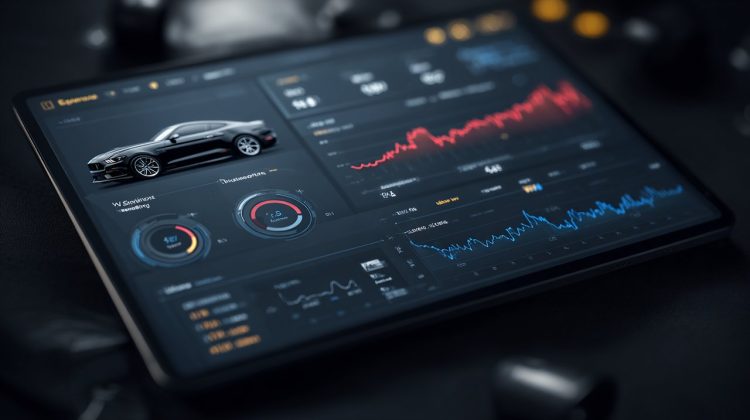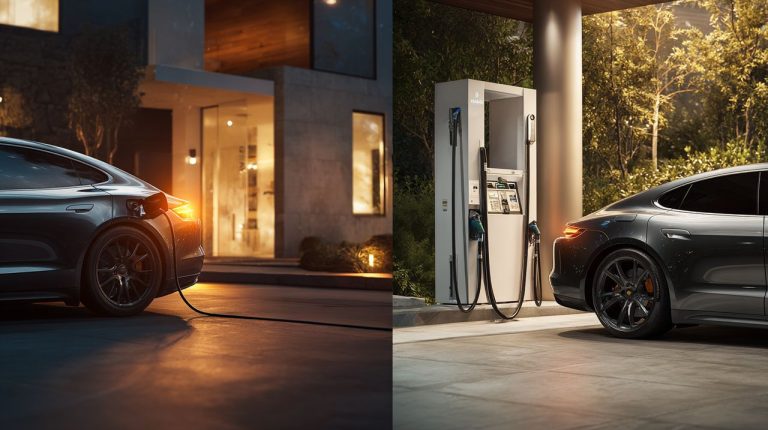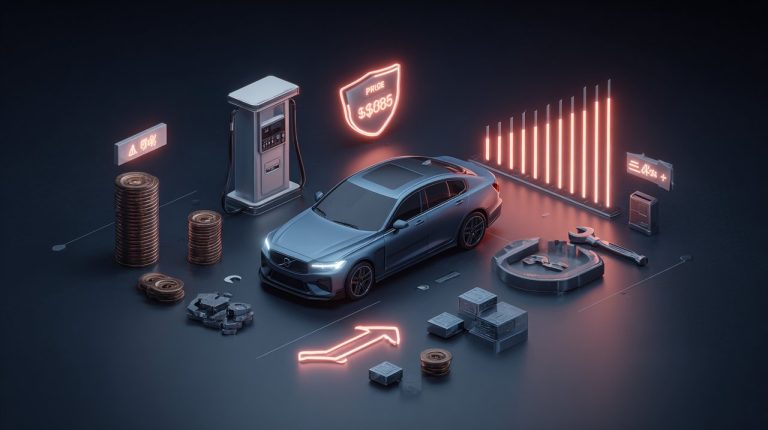The Ergonomics of Automotive Ownership: Designing Your Seamless Financial Ecosystem
Have you ever felt like the true cost of owning your car is a bit of a mystery? It’s easy to track the big payments, but the real challenge lies in the scattered bits: fuel receipts here, insurance bills there, maintenance records tucked away. This isn’t just about numbers; it’s about digital friction.
When these essential financial details remain isolated, it’s incredibly hard to get a clear picture or make smart decisions. Our journey showed us that by thoughtfully integrating these diverse data streams, we could not only pinpoint true car ownership costs but also unlock significant savings.
This journey confirmed a core principle: Financial clarity isn’t just about tracking numbers. It’s about designing a seamless ecosystem where information flows effortlessly, revealing clear pathways to optimization.

The Hidden Friction of Automotive Finance
Beyond Purchase Price: Unpacking True Costs
It’s tempting to think of car ownership costs as just the purchase price or that monthly payment. But as a workflow integrator, I see beyond the obvious. There are so many less visible costs that quietly add up, creating financial drag.
To truly understand your car’s financial footprint, acknowledging every single touchpoint is crucial, and a comprehensive tool can help you precisely calculate this total cost True Cost of Car Ownership Calculator.
Data Silos: The Challenge of Comprehensive Tracking
The real challenge in getting a grip on these true costs comes down to what I call ‘data silos’ in our personal finance. Imagine your fuel purchases on one card, insurance paid from a different account, and maintenance receipts scattered between a physical folder and your email inbox.
This fragmentation is the very definition of digital friction. It makes it incredibly difficult, almost impossible, to bring all that information together, analyze it, and get a coherent view of your car expenses. Without a unified system, trying to spot trends or find ways to save money often becomes a frustrating and eventually abandoned task.
Building Your Car Cost Ecosystem: A Methodical Blueprint
Centralized Data Hubs: Tools for Aggregation
So, how do we tackle this data fragmentation? The very first step in building your car cost ecosystem is to establish a centralized data hub. Think of it as the command center for all your automotive finances.
This hub could be:
- A dedicated budgeting application with strong categorization features.
- A sophisticated spreadsheet system you’ve customized.
- Or even a comprehensive personal finance management platform.
The key is that whatever you choose, it becomes the single, primary place where all car-related financial transactions are directed. It acts as the control tower for your automotive financial data, ensuring everything is in one place.

Automated Data Flow: Reducing Manual Input
The true elegance and efficiency of any data ecosystem depend on drastically reducing manual input. Why? Because manual entry is a notorious source of digital friction and errors.
Implementing automated data flow is the solution. This means linking your bank accounts and credit cards directly to your centralized hub. Transactions are then automatically imported and categorized, saving you time and preventing mistakes.
What about those non-digital receipts? Don’t worry. Solutions like OCR scanning apps or dedicated expense trackers can convert physical documents into digital entries. This ensures every expense is captured and routed to the correct category, all without significant human intervention.
Integrating Intangibles: Depreciation and Opportunity Costs
While we focus a lot on direct, tangible expenses, a truly complete picture of car ownership costs mustintegrate intangibles. I’m talking about depreciation and opportunity costs.
Depreciation is the loss of your vehicle’s value over time. You can estimate this using online tools or industry guides, and it should be regularly recorded in your data hub. It’s a real cost, even if you don’t write a check for it.
Opportunity cost represents the potential returns you might have gained if you had invested the money spent on your car elsewhere. Considering this broadens your financial perspective significantly. Even though these aren’t direct cash outflows, they profoundly impact your long-term financial health and absolutely need to be factored into your overall financial understanding.
Choreographing Savings: Optimizing Your Automotive Workflow
Real-Time Insights: Pinpointing Expenditure Leaks
Once you have a well-designed data ecosystem, the magic happens: the output isn’t just raw numbers, it’s real-time insights. Imagine automated reports and dashboards giving you immediate clarity on your spending patterns. This allows you to quickly pinpoint any ‘expenditure leaks’.
For example, a sudden spike in fuel costs could instantly flag inefficient driving habits. Or recurring minor repairs might signal it’s time for a more comprehensive vehicle inspection. This immediate feedback loop is absolutely critical for proactive financial management, helping you stay ahead of potential issues.
Strategic Adjustments: Data-Driven Decisions
The true power of an integrated workflow isn’t just seeing the data; it’s about enabling strategic adjustments based on clear, data-driven decisions. Instead of just guessing where to trim costs, your system will precisely highlight which categories are over budget.
This might lead you to re-evaluate your insurance provider, optimize your daily driving routes, or plan maintenance proactively to sidestep those dreaded, costly emergency repairs. Each adjustment you make becomes a direct, informed response to the insights flowing seamlessly from your financial ecosystem.
Our Case Study: Thousands Saved Through Systematized Clarity
We put this methodical blueprint to the test ourselves, and the results were truly compelling. By meticulously integrating bank transactions, fuel app data, and all our maintenance records into one financial management platform, we unlocked an unprecedented level of clarity.
The system immediately spotlighted areas where our spending consistently exceeded projections—specifically, in reactive maintenance and less-than-optimal insurance coverage. This systematized clarity empowered us.
We were able to negotiate a far more favorable insurance policy, transition to a proactive maintenance schedule, and even adjust our driving habits based on real-time fuel efficiency data. Over an 18-month period, these data-informed strategic adjustments led to thousands saved compared to previous years. It’s a powerful demonstration of what an optimized financial workflow can achieve.

The Ergonomics of Financial Clarity: Beyond the Numbers
Ultimately, the journey to truly understanding and optimizing your car ownership costs goes far beyond just crunching numbers. For me, it’s about designing a digital environment where your financial information isn’t just sitting there, but is truly accessible, actionable, and effortless to manage.
This is the ergonomics of financial clarity: reducing the cognitive load that often comes with personal finance. It transforms what might have been a source of frustration into a beautifully streamlined process. This holistic approach, where every data point contributes to a coherent narrative, offers more than just significant financial savings.
It provides invaluable peace of mind, freeing up your mental bandwidth for more strategic considerations in life. It’s about empowering you to make truly informed decisions, just as we set out to do.
💡 Frequently Asked Questions
The main challenge is the 'digital friction' caused by scattered financial details such as fuel receipts, insurance bills, and maintenance records across different sources, making it difficult to get a clear and comprehensive financial picture.
The article suggests designing a seamless financial ecosystem by integrating diverse data streams. This involves establishing a centralized data hub (like a budgeting app) and automating data flow from various financial sources to get a unified view.
Data silos refer to the fragmentation of car-related financial information, where different expenses like fuel, insurance, or maintenance are tracked separately or paid from different accounts, making it hard to compile a coherent overview.
Beyond direct expenses, it's crucial to integrate intangible costs such as depreciation (the loss of the vehicle's value over time) and opportunity costs (potential returns lost from investing the car's cost elsewhere).
An integrated system provides real-time insights to pinpoint 'expenditure leaks' and enables strategic, data-driven decisions. This can lead to significant savings by optimizing areas like insurance, maintenance, and driving habits, ultimately offering peace of mind.








